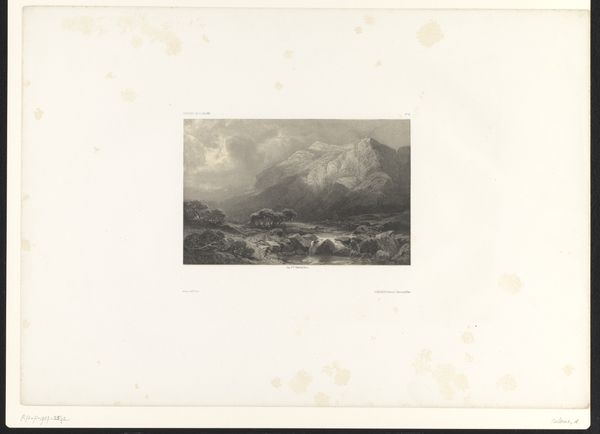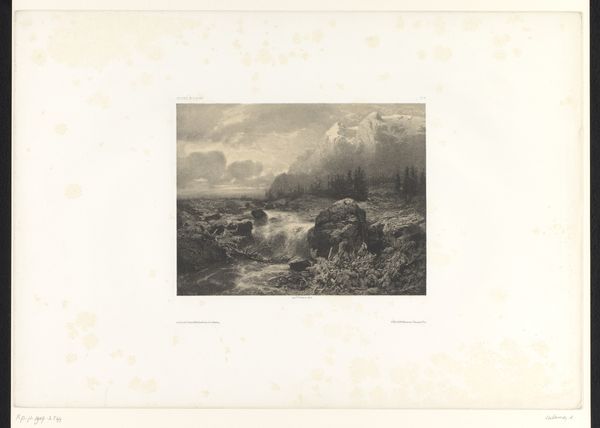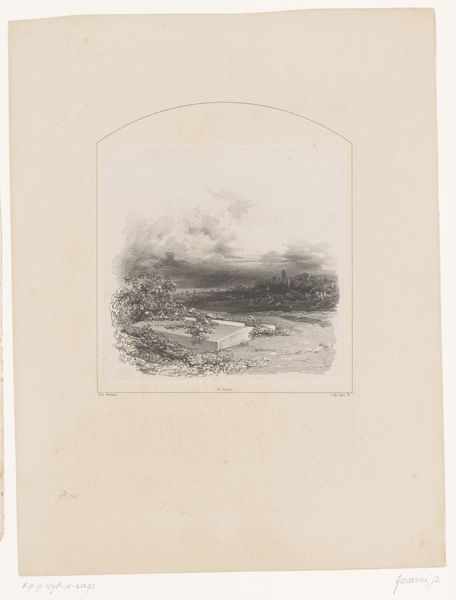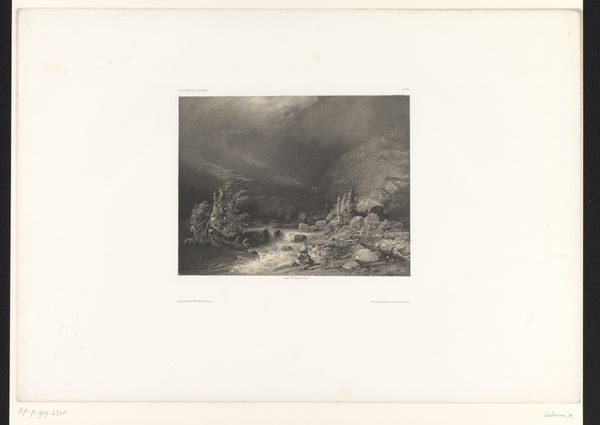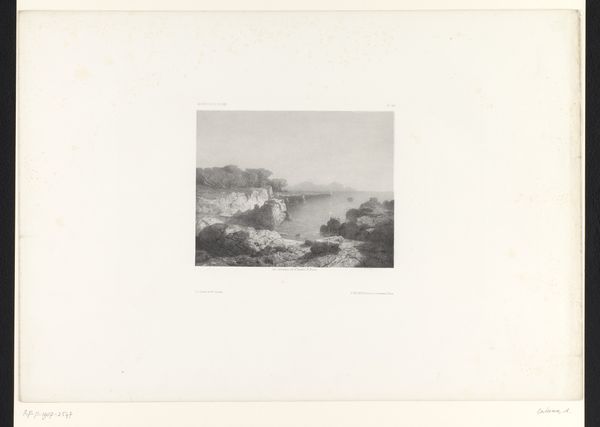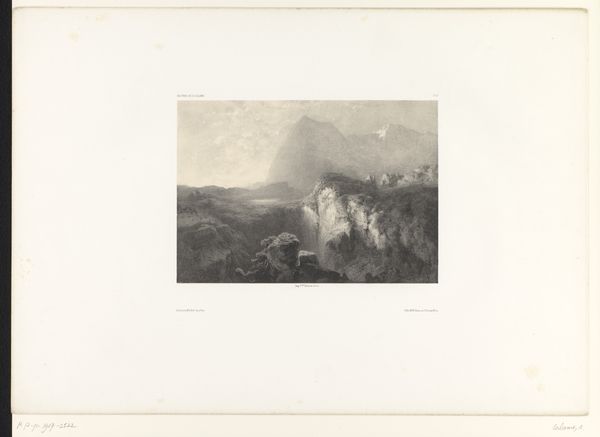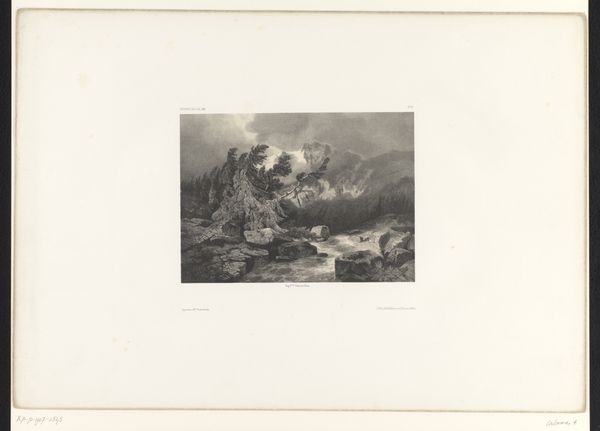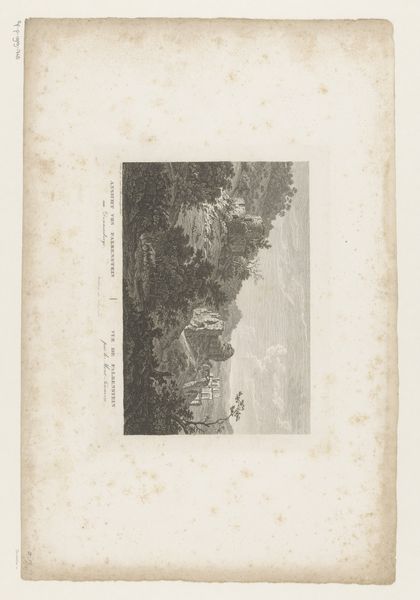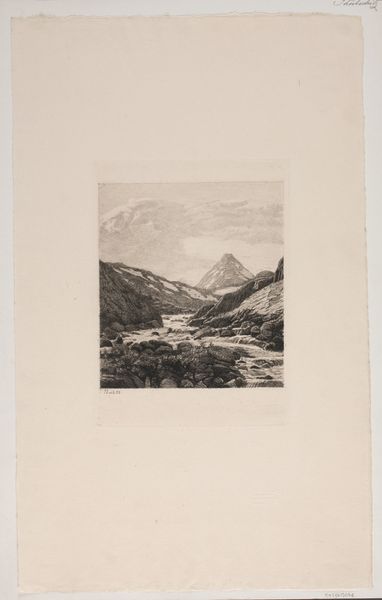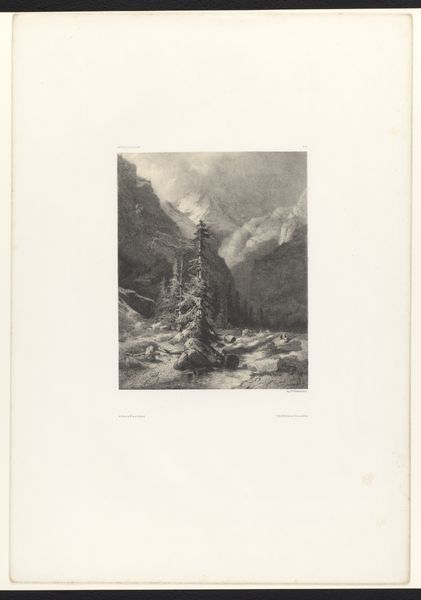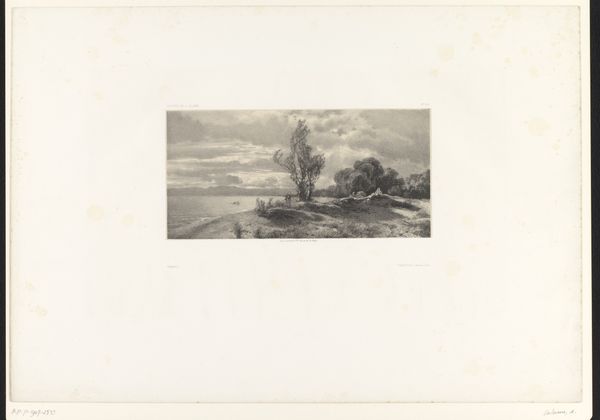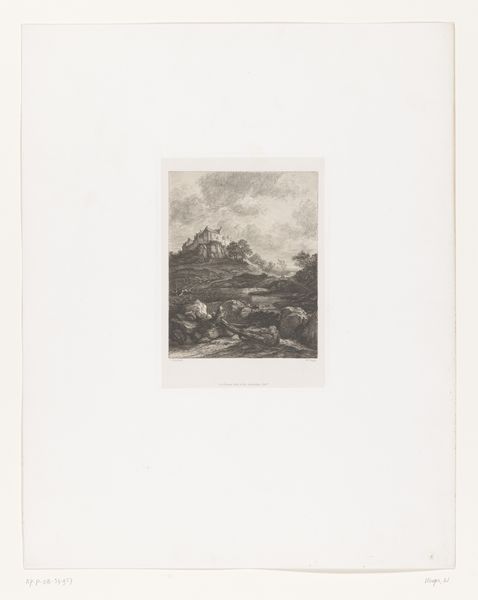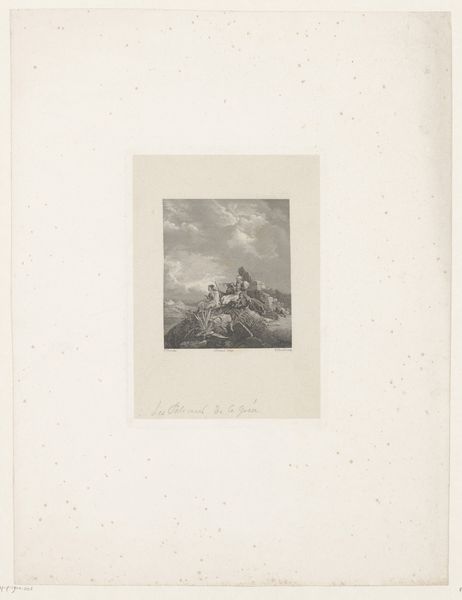
Dimensions: height 552 mm, width 389 mm
Copyright: Rijks Museum: Open Domain
Alexandre Calame created this landscape, ‘Berglandschap met beek langs de rotsen,’ using etching. This printmaking technique relies on the transformative power of acid on metal. The copperplate would first be covered with a waxy, acid-resistant ground. Calame then scratched his design into this ground, exposing the metal beneath. When the plate was immersed in acid, the exposed lines were ‘bitten’ or etched, creating grooves. These grooves hold the ink. Consider the sharp, clear lines that define the rocks and the churning water. Etching allows for a level of detail almost impossible to achieve by hand. But the success of an etching also hinges on the etcher’s skill in controlling the acid’s effects, and that of the printer. Looking at this work, we might think about the division of labor inherent in printmaking at this time, which was a key ingredient in the mass media that began to take hold of nineteenth-century society. It's not just an image of a landscape; it's an artifact of its time.
Comments
No comments
Be the first to comment and join the conversation on the ultimate creative platform.
